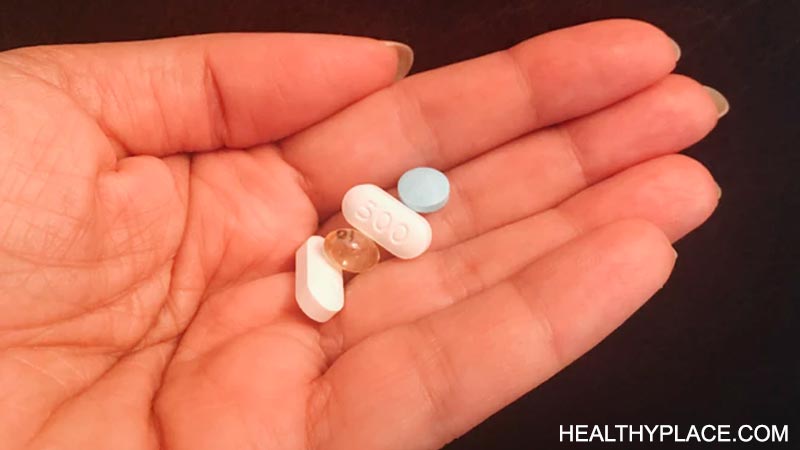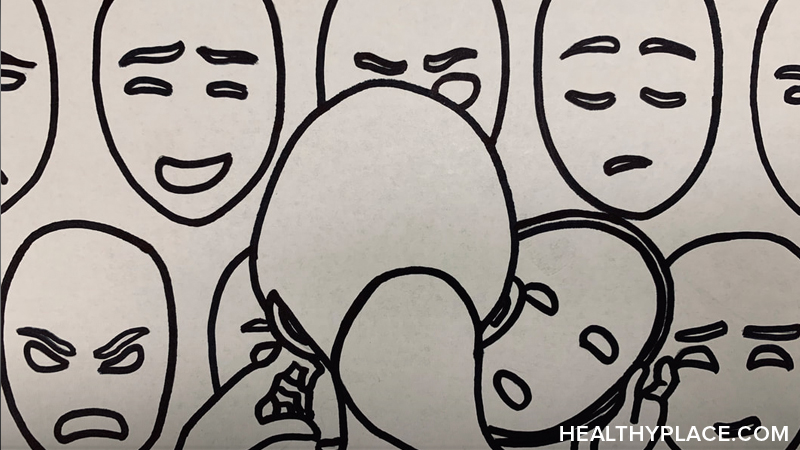Side-Effects of Diabetes Medications

The side-effects of diabetes medications make many people hesitate. Is taking diabetes medication worth it if unpleasant and even dangerous side-effects threaten? Some people believe that type 2 diabetes medications are dangerous and shouldn’t be used if blood sugar doesn’t swing too high or low ("What Is Type 2 Diabetes? Symptoms, Causes, Treatment"). Dangers of these medications include their side-effects and interactions with other drugs and conditions. Let’s explore the side-effects of diabetes medications to discover what’s more harmful: medication side-effects or diabetes itself.
Side-Effects of Diabetes Medications
Many types of medications for type 2 diabetes exist. General classes you might hear of when working with your doctor are
- Biguanides
- Thiazolidinediones (TZDs)
- SGL2 inhibitors
- DPP-4 inhibitors
- Sulfonylureas
- Meglitinides
- Insulin
Each group includes specific medications, and they do different things to keep blood sugar in control. Doctors prescribe certain medications based on what the individual patient needs. Your medication might work by helping your pancreas produce more insulin, decreasing the amount of sugar your body produces, helping your kidneys remove excess sugar from the blood, or boosting insulin function. They can be very beneficial, but like all medications, diabetes medications carry side-effects.
It’s important to note that each type of medication has unique side-effects, although effects do overlap considerably. The below list is general. Not every side-effect applies to every medication. This is meant to be an overview of things you might expect when taking medication for type 2 diabetes that can help you talk to your doctor about taking medication.
There are both short- and long-term side-effects of diabetes medication. They range from mild to very serious. Examples of long-term side effects of some diabetes medications include:
- Nausea
- Weight gain (which can be counter-productive, as overweight and obesity are culprits in type 2 diabetes)
- Periods of low blood sugar, or hypoglycemia. Often called “hypos,” these dips in glucose can be dangerous, leading to disorientation, fainting, and possibly coma
Other serious side effects that you may encounter when taking diabetes medications:
- Increased risk for fractures
- Elevated risk of liver disease
- Higher risk of bladder cancer
- Increased ovulation and risk of pregnancy
- Fluid retention
- Interference in the absorption of vitamin B12
- Upper respiratory infections
Among the milder side-effects of diabetes medications:
- Minor physical discomforts
- Slight and short-lasting hypoglycemia
- Headache
- Minor fluid retention
- Hives
- Facial swelling
- Upset stomach
- Decreased appetite
- Diarrhea
- Constipation
- Gas
- Bloating
- Skin rash
- Yeast infections
- Urinary tract infections
- Weakness
- Dizziness
In addition to these side-effects of diabetes type 2 medications, there are health conditions that affect how diabetes medication works. Your medication might not work correctly or as well if you have:
- Heart disease
- Kidney disease
- Liver disease
- A heavy drinking problem
Side-effects of diabetes medications can involve interaction with other medication you may be taking. If you are being treated for any of the following conditions, diabetes medications can interfere:
- HIV/AIDS medications
- Diuretics to flush out excess fluids
- Nitrates for angina
- Medication for high blood pressure in lungs
Always disclose all medication you are taking to your doctor. That way, the two of you can discuss what is safe and what you should avoid.
Another important thing to discuss with your doctor is whether you should stop taking diabetes medications. Just as taking medication can cause undesirable effects, there could be side-effects of stopping diabetes medication, too.
Side-Effects of Not Taking Diabetes Medication
An important function of diabetes medication is to reduce the amount of sugar in the bloodstream. It’s logical that when someone stops taking diabetes medication, blood sugar climbs again. The resulting hyperglycemia can cause serious complications like nerve and blood vessel damage.
There are other results, too. Short-term effects of not taking diabetes medication include:
- Fatigue
- Weakness
- Confusion
- Ketoacidosis (more common in type 1 diabetes, it can occur in type 2 as well; it occurs when the body breaks down fat for fuel, producing ketones that cause serious health conditions)
- Hyperosmolar syndrome (dangerously high blood sugar caused by dehydration)
Among the long-term effects of not taking diabetes medications:
- Vision problems
- Blood vessel damage/blood flow problems
- Diabetic neuropathy (nerve damage)
- Necrosis (the process of tissue death, possibly resulting in amputations)
- Kidney disease
- Cardiovascular disease
- Dental problems
Not taking diabetes medications can gradually destroy someone’s health. In comparing the side-effects of diabetes medications to the side-effects of not taking diabetes medication, you might find that the dangers of diabetes are worse than the dangers of diabetes medications.
Medication is too complex to be “right” or “wrong.” Medications are unique. People are individuals. The best approach is to talk openly with your doctor to develop the right treatment plan for you, one which balances proper diabetes management with drug side effects and interactions. It’s possible to find diabetes medications without major side-effects ("Complete List of Diabetes Medications for Type 1 and Type 2").
APA Reference
Peterson, T.
(2022, January 4). Side-Effects of Diabetes Medications, HealthyPlace. Retrieved
on 2025, November 10 from https://www.healthyplace.com/diabetes/medications/side-effects-of-diabetes-medications
Alcoholism and Type 2 Diabetes: Does Alcoholism Cause Diabetes?

Alcoholism and diabetes type 2 can be a very dangerous combination. Alcoholism and heavy drinking can cause type 2 diabetes. Additionally, for people who already have either type of diabetes—type 1 or type 2—heavy alcohol consumption can worsen the disease. This look at the mix of alcohol and diabetes is designed to increase understanding of alcohol’s effect on diabetes in order to inform lifestyle choices.
There’s a difference between occasional moderate alcohol consumption and alcoholism and/or heavy drinking. It’s alcoholism and heavy drinking that pose health dangers, including diabetes. Indeed, “Diabetes mellitus is recognized clinically as a complication of alcoholism” (Kim & Kim, 2012). Multiple factors explain why alcoholism can cause diabetes type 2 ("What Causes Diabetes?").
The Relationship Between Alcoholism and Type 2 Diabetes
Heavy drinking, whether binge drinking, excessive daily drinking, or both damages the body in many ways. A brief description of what happens in diabetes can help put alcohol’s effects in perspective.
Diabetes is a disease involving metabolism. When we eat carbohydrates, they’re digested into blood sugar called glucose. In healthy functioning, an organ called the pancreas makes and releases insulin into the bloodstream to meet glucose and help it enter the body’s cells where it’s used for energy. That process goes awry in both type 1 and type 2 diabetes, however, resulting in hyperglycemia (high blood sugar) or hypoglycemia (low blood sugar). Glucose and insulin problems cause other serious health conditions as well.
Now let’s add alcoholism and heavy drinking to the mix and see how they increase the dangers of diabetes:
- Impaired liver function, which leads to depleted blood glucose levels
- Insulin resistance
- Decreased or obliterated glycemic control (the ability to keep blood sugar levels within a healthy range)
- Pancreatitis, a disease that damages the pancreas and interferes in insulin production
- Disruption of carbohydrates and glucose metabolism
- Weight gain and obesity, major causes of type 2 diabetes, due to the high calorie content in alcohol
- Hypoglycemia, which can begin within minutes of the first drink and continue for up to 12 hours after stopping
Heavy drinking and diabetes each cause other health problems. Together, their damage can be extensive. Alcoholism and diabetes complications include, but aren’t limited to:
- Nerve damage (neuropathy)
- Eye damage (retinopathy)
- High blood pressure
- Increased triglycerides (fatty acids that increase risk of stroke)
- Liver damage (cirrhosis)
Alcohol can also interact with diabetes medications. Many diabetes medications are designed to lower blood glucose levels, and because alcohol also lowers blood sugar, hypoglycemia can result. Blood sugar can drop so low that it causes insulin shock, a condition that can be fatal without swift treatment.
Does Alcohol Always Cause Diabetes Problems? Not Necessarily
One thing to note is that the amount of alcohol consumed matters. Studies have shown that light drinking or abstinence has no effect on diabetes, heavy drinking can cause or worsen it, but moderate drinking may have protective factors.
Research indicates that moderate drinking can reduce the risk of diabetes development by 30 -40 percent (Carlsson, et al., 2003). Further research is needed to discover the reason moderate alcohol consumption seems to have protective factors for diabetes. Moderate drinking is defined as five to 29.9 g/day in men and five to 19.9 g/day in women.
It seems that other factors matter as well. Alcohol appears to affect men and women differently. Body type and weight make a difference in how drinking affects diabetes. Much is still not well understood, and research is ongoing to deepen understanding of alcoholism and type 2 diabetes.
Drinking and Diabetes: Use Precautions
Having diabetes doesn’t necessarily mean you can’t drink alcohol. Drinking and diabetes type 2 or diabetes type 1 is possible with some precautions:
- Stick to moderate drinking
- Count carbs while drinking because too many leads to hypoglycemia
- Monitor your glucose levels frequently
- When glucose drops, eat something low-carb
- Wear a medical alert bracelet, as hypoglycemia symptoms are similar to intoxication (you want to avoid being dismissed as drunk if you need medical attention for hypoglycemia)
Alcoholism can cause diabetes type 2, and it can worsen the effects of both types of diabetes. If you are struggling with alcoholism, seeking treatment can improve your health and quality of life.
APA Reference
Peterson, T.
(2022, January 4). Alcoholism and Type 2 Diabetes: Does Alcoholism Cause Diabetes?, HealthyPlace. Retrieved
on 2025, November 10 from https://www.healthyplace.com/diabetes/mental-health/alcoholism-and-type-2-diabetes-does-alcoholism-cause-diabetes
Diabetic Rage: Can Diabetes Cause Aggressive Behavior?

Diabetic rage and aggressive behavior are real. Diabetes can be hard to live with. Frustration and irritability are common. These are normal human emotions, especially in the face of living with a serious and difficult disease like diabetes. There is a darker side to diabetes, though: diabetic rage. It’s frightening and dangerous. This look at diabetic rage and aggressive behavior can help you understand what’s happening to you or a loved one and learn what to do about it.
Diabetic Rage: Why it Happens
Two primary factors are responsible for diabetic rage and aggression: psychological and physiological.
The psychological components of diabetic rage come from the stress of living with this disease. Feelings of frustration and resentment, a sense of “why me,” are common. Fear and uncertainty about health and lifestyle limitations can loom large. Then there’s the overwhelming nature of diabetes treatment and management that can create emotions ranging from annoyance to infuriation ("Does Diabetes Cause Mood Swings?").
Psychologically, perspective plays a big role in diabetic rage. The more a person remains stuck in the resentments and anger of having to live with diabetes, the more he or she is vulnerable to becoming aggressive.
Mindset and stress contribute to diabetic rage and aggressive behavior, but they don’t work alone. Numerous physical functions underlie the violent nature of diabetes.
The driving force behind diabetes-related problems in brain functioning is glucose. The brain needs proper levels of glucose (sugar) to operate. When blood sugar levels are above 140 mg/dL (hyperglycemia) or below 70 mg/dL (hypoglycemia), the brain suffers. Things can go wrong, too, when blood sugar levels spike and drop frequently. Incorrect or fluctuating glucose levels can cause damage and lead to such things as:
- Increased production and secretion of the stress hormone cortisol
- Depression
- Anxiety
- Damage to the amygdala (the structure responsible for cortisol secretion and the fight-or-flight response)
- Damage to the thalamus (the structure responsible for things like self-control)
- A decrease in the functioning of the blood vessels in the brain
These psychological and physiological factors involved in rage and aggression are part of both type 1 and type 2 diabetes. Likewise, the behaviors apply to both types of diabetes.
What Diabetic Rage and Aggressive Behavior are Like
Feeling furious is normal. Problems arise when anger intensifies and is projected outward. Diabetic rage symptoms are intense and often frightening. While there are individual differences in the way people act when they’re enraged, watch for these general signs of diabetic rage:
- Delusional beliefs that someone is trying to hurt you, making you lose self-control and lash out
- Intensifying agitation
- Hitting or slapping
- Shoving
- Yelling
- Grabbing
- Threatening
- Belittling
- Intimidating
- Impulsivity
- Destruction
- Temper tantrums
Diabetic rage can lead to violence against property and people. There are ways to deal with this diabetic rage to prevent it from recurring even though diabetes itself is permanent.
What To Do About Diabetic Rage
Dealing with diabetic rage involves immediate treatment to stop aggressive behavior and long-term management techniques to prevent future episodes. Because improper glucose levels are behind diabetic rages, it’s important to return blood sugar to the healthy range (between 70 mg/dL and 140 mg/dL). Testing blood sugar often will help you know when to treat your glucose levels.
Once you test your blood sugar, you can take measures to return it to normal. This involves eating or drinking something to raise or lower your numbers. If you have hypoglycemia, have a bit of food with a high glycemic index (GI) such as sugar, sugar-sweetened drinks, or even glucose tablets. If you have hyperglycemia and need to lower your number, eat something with a low GI, such as a hard-boiled egg, whole-grain bread, or cheese.
Treating your blood glucose levels in the moment will return your functioning to normal and decrease the hostile feelings and aggressive behavior. You can prevent future hostility by treating aggression and anger problems in general.
Self-care is crucial. Following your diabetes treatment plan by monitoring your blood glucose, taking your medication, eating well, and exercising will help keep blood glucose levels stable and your temper even.
Dealing with feelings of anger and resentment will help you feel more satisfied with life and less aggressive.
Taking anger management classes or counseling, in person or online, will give you strategies to deal positively with anger. Support groups are helpful for many people trying to manage diabetic rage. Also, keeping a journal to track your angry feelings and aggressive behavior will help you see patterns, notice anger building, and take measures to reduce feelings of hostility.
Developing a collection of calming strategies can help. Deep breathing, meditation, yoga, tai chi, drawing, coloring, or listening to or playing music can help induce calm and replace anger with engagement in a pleasant activity.
Anger is indeed a natural psychological and physical response to diabetes. With awareness and treatment, diabetic rage and aggressive behavior can be treated and managed so they don’t hurt anyone.
APA Reference
Peterson, T.
(2022, January 4). Diabetic Rage: Can Diabetes Cause Aggressive Behavior?, HealthyPlace. Retrieved
on 2025, November 10 from https://www.healthyplace.com/diabetes/mental-health/diabetic-rage-can-diabetes-cause-aggressive-behavior
Understanding Dissociative Identity Disorder Alters

Alternate personalities, known as alters in dissociative identity disorder (DID), are a fundamental part of the disorder. And while most people can't imagine more than one identity living within the same person, that's exactly what alters in DID are. People with alters often refer to themselves as "we," due to the multiple alters within the single person (Dissociative Identity Disorder Controversy: Is DID Real?).
What Are Dissociative Identity Disorder Alters?
While the term "alter" is not mentioned in the Diagnostic and Statistical Manual of Mental Disorders, Fifth Edition – the manual used to diagnose all mental illnesses – it does contain the criterion of multiple personality states being present in one with dissociative identity disorder (DID DSM-5 criteria). These personality states must each have their own enduring pattern of perceiving, relating to and thinking about the environment and self. These personality states can be thought of as alters. Alters involve marked discontinuity in sense of self and sense of agency, accompanied by related changes in affect, behavior, consciousness, memory, perception, cognition, and/or sensory-motor functioning.
DID alters can have different physical affects, accents, memories, ages, names, functions, genders and other traits. Collectively, all the alters together are known as the "system" in dissociative identity disorder. The dissociative identity disorder alter who has executive control over the body most of the time is known as "the host." The host personality may or may not be the individual's original personality.
In dissociative identity disorder treatment, some patients wish to integrate the different alters. Dissociative identity disorder integration is when an alter becomes combined into the individual as a part of them and not as a completely separate alternate personality.
Common Dissociative Identity Disorder Alter Types
Dissociative identity disorder alters are commonly of specific types. The following are common DID alter types:
- Child and adolescent alters – young alters are often the first discovered in therapy and are the most common type of alter. These alters emerge to handle the abuse that the original personality couldn't tolerate. A DID alter may be referred to as a "little" if the alter acts seven years or younger.
- Protector or rescuer alters – these alters can be of any age and were created to save the original person from intolerable situations. These DID alters are often tougher and braver than the original personality.
- Persecutor alters – these DID alters are modeled after the abuser. Persecutor alters create negative messages blaming the original identity for the abuse and telling them they need to die or pay for it. Often the host will act on these negative messages and self-harm or even attempt suicide. This is often when the person is first introduced to the mental health system.
- Perpetrator alters – also modeled after the abuser, these dissociative identity disorder alters direct their hostility outward rather than inward towards other personalities.
- Avenger alters – this dissociative identity disorder alter holds the rage from childhood abuse and may seek retribution from the abuser. They tend to express the anger of the entire system and can be hostile.
While those are the common DID alter types, other alter types occur as well.
APA Reference
Tracy, N.
(2022, January 4). Understanding Dissociative Identity Disorder Alters, HealthyPlace. Retrieved
on 2025, November 10 from https://www.healthyplace.com/abuse/dissociative-identity-disorder/understanding-dissociative-identity-disorder-alters





